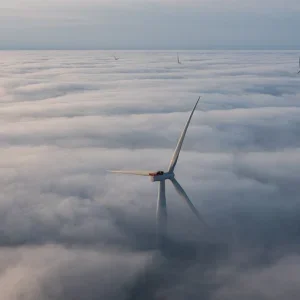The development of Nicaragua’s energy sector has climbed to the top of the country’s priority list in recent years, and now boasts a wide range of investment opportunities.
Due to its rich natural resources, the country has approximately 4,500MW of renewable energy generation potential, distributed across geothermal, hydroelectric, biomass and wind sources.
Nicaragua has the third-highest renewable energy potential in Latin America, behind Brazil and Chile.
The winds of change
An increasing area of opportunity in Nicaragua is wind power. The country is well favoured by wind currents that provide the appropriate conditions for wind power projects. According to the Ministry of Energy and Mines (MEM), the country has wind energy generation potential of 800MW and, at present, there are three projects generating a total of 141.5MW of wind energy, all located in Rivas: Amayo I and II (63MW), La Fe (39.5MW), and Eolo (39MW).
Studies completed by the Solar and Wind Energy Resource Assessment (SWERA), with the aim of assessing the potential development of Nicaraguan wind and solar projects, identified several promising areas in the country. Furthermore, private initiatives are developing wind measurements and feasibility studies in the regions of El Crucero, Ometepe, Rivas, Estelí, the Corn Islands and the Atlantic coast of Nicaragua.
More than 25 renewable energy projects have been developed in Nicaragua over the past nine years. Experts estimate that the country possesses the natural resources to generate nine times more energy from renewables than it consumes. In fact, over the past few years, the country’s renewable energy growth has been faster than its demand for power, which increases at a clip of 4-5% a year. This outstanding potential will allow Nicaragua to sell excess energy beyond its borders and across the regional market.
Total foreign investments in renewables were valued at $107 million in 2012, 8.3% of total investments. As a result, Nicaragua’s energy generation matrix is expected to reduce its fossil fuel dependency from 49 to 26% by 2017.
From mangoes to windmills
Very few larger nations can claim the kind of rapid, widespread switch from fossil fuels to clean energy that Nicaragua has experienced. Rivas, the ‘city of mangoes’, has been transformed into the ‘city of windmills’ in less than five years, with almost 100 wind turbines now spinning alongside the Pan-American Highway.
In order to develop the country’s energy sector, the Government of Nicaragua’s MEM facilitates investment attraction through the implementation of laws and regulations that establish the legal basis for foreign investment.
This provides investors with the legal security they require, as well as very attractive incentives to develop renewable energy projects throughout the country.
Several agencies around the world have recognised this growth in green energy investment. According to ‘Climatescope 2013’, a report published by Bloomberg New Energy Finance and the Inter-American Development Bank, Nicaragua ranks third highest in Latin America (behind Brazil and Chile) for investments in renewables, first as a supporter of green microfinancing in Central America, and first in enabling the necessary framework for green energy projects.
Business, the economy and energy: renewed
Emerging-markets power company Globeleq recently inaugurated its 44MW Eolo de Nicaragua wind farm in Nicaragua, strengthening its position as the leading renewable energy company in the Central America region. The Eolo wind farm is located in the province of Rivas on the shores of Lake Nicaragua.
"This event symbolises another important investment commitment by Globeleq and our partner Mesoamerica Power as we continue to build the leading wind company in Central America," said Globeleq CEO Mikael Karlsson following the inauguration. "We congratulate the Government of Nicaragua and all energy sector participants for committing to the country’s renewable energy programme, which will have significant long-term economic and environmental benefits for the people of Nicaragua."
The amount of electricity generated annually by the Eolo wind farm is estimated at more than 178GWh – the equivalent of approximately 7% of Nicaragua’s total annual electricity needs – and is expected to displace approximately 110,054t of carbon emissions a year.
About 400 jobs were created during Eolo’s construction, with approximately 40 full-time positions required for ongoing operation, including direct employees and subcontractors. Construction of the Eolo wind farm was completed ahead of schedule and within budget with first power delivered to the grid in November 2012.






